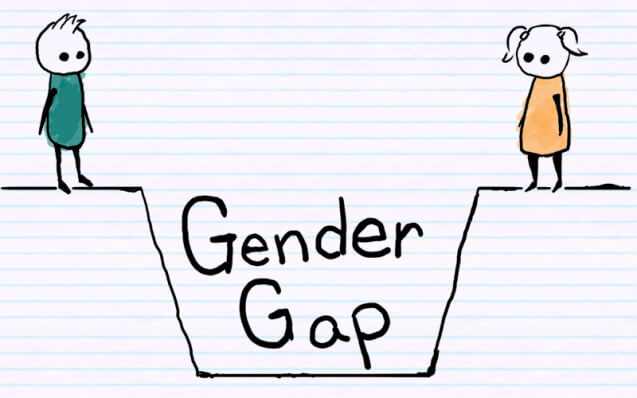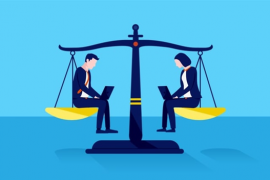By: Monica Burdick
Those of us with careers in science, technology, engineering, or mathematics (STEM fields, in today’s common parlance) know the importance of truths revealed by numbers. How can it be, then, that so many people in our numbers-based fields are inured to the deep disappointment I feel regarding statistics on gender disparities in STEM-related jobs?
According to 2016 figures from the National Science Board, women make up half of the total U.S. college-educated workforce and only 29 percent of the science and engineering workforce. Though female and male students show no significant differences in their math and science abilities between kindergarten and senior year of high school, somehow only 35 percent of chemists, 17 percent of industrial engineers, 11 percent of physicists and astronomers, and 8 percent of mechanical engineers are women.
These imbalances ought to provoke outrage in their own right—or, at the very least, an investigation into their causes. But the byproducts of the under-representation of women across STEM fields are just as troubling because they shape the very questions and technological priorities that drive these fields.
That is to say: Might it be a related problem that researchers often neglect to account for gender differences in their medical research (likely negatively impacting women) or that efforts to develop better contraception options have been woefully weak in recent decades?
The gender imbalance in STEM fields goes beyond women in these industries: It’s bad for women across our society. And if it’s bad for women, then it’s bad for society as a whole. If we can agree on that, surely we can agree that we must try to do something to fix the problem. Here is what I believe we can start doing today:
Women must be encouraged to ask questions. From “Are there any internship positions available with you?” to proposing research hypotheses, we need to hear from women more broadly across these fields, which means we need to make sure that they have the confidence to pursue their curiosities—and to see their inquisitiveness and pursuits as valid.
Women and the people around them in the workplace need to actively separate their gender from their role. The problem of inequality affects all of us, and we can only correct for it if we all work together to own the problem. In my labs and meetings, I do my best to eradicate all gender roles, both for women and for men. I do not want women to be the default “maintainers” of the labs, and I don’t want to see men as the only thought leaders in meetings. We will just be creating tension that distracts from our work unless we all acknowledge that there are no gender-specific roles in these settings.
We must acknowledge the persistence of stereotypes and unconsciously biased actions in order to overcome them. As an Asian-American woman, I face hindering stereotypes when I fulfill my duties as a leader in the lab. I have to actively remind myself that it’s OK to be outspoken and firm, even though it’s not what a stereotype would dictate of me. An accounting by women and anyone who works with women about what our perceived stereotypes misguidedly push us to do and say is a good first step in escaping their grasp. If an individual is not confident enough to stand up to domineering co-workers and express her thoughts, I encourage her to find a mentor to help her represent herself—and to see this as a learning opportunity. There is no one-size-fits-all approach, but with guidance and practice, a person can develop the ability to express ideas freely.
I began my career with naive resignation to the lack of consideration given to the gender gap in STEM fields. As the years have worn on, that youthful foolishness has given way to shock that hasn’t had reason to dissipate. It’s good to see more discussion about some of these issues, but the talk doesn’t mean much until we see a culture shift and real steps taken at all levels, especially by senior figures within corporations and institutions. As a female professor of engineering, I believe that we must listen to understand how women are being discouraged and harmed by this problem, and then we must act.




